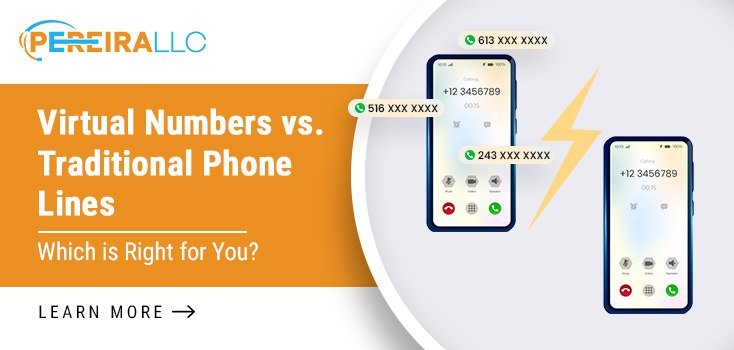
Virtual Numbers vs. Traditional Phone Lines: Which is Right for You?
In the rapidly evolving landscape of communication technologies, businesses face a crucial decision: stick with traditional phone lines or embrace the versatility of virtual numbers. Both options have their merits, but understanding the differences and weighing the benefits is essential for making the right choice for your organization. In this blog post, we’ll delve into the key distinctions between virtual numbers and traditional phone lines to help you determine which solution aligns best with your needs.
Traditional Phone Lines: The Tried and True
For decades, traditional phone lines have been the cornerstone of business communication. Operating through physical copper wires, these landline systems offer reliability and familiarity. With a traditional phone line, you have a dedicated phone number tied to a specific location, providing a sense of permanence and stability. This setup is well-suited for businesses that prioritize consistent voice quality and reliability, such as brick-and-mortar stores and offices.
However, traditional phone lines come with limitations. They lack the flexibility and scalability required in today’s fast-paced business environment. Expanding your operations or establishing a remote workforce can be challenging and costly with traditional phone systems. Additionally, features like call forwarding, voicemail-to-email, and virtual receptionists are often add-ons with additional fees.
Virtual Numbers: The Dynamic Alternative
In contrast, virtual numbers leverage internet-based technology to offer a more flexible and scalable solution. Also known as VoIP (Voice over Internet Protocol) numbers, virtual numbers are not tied to physical infrastructure. Instead, they are hosted in the cloud, allowing for seamless integration with a variety of devices and platforms. Virtual numbers can be assigned to any device with internet connectivity, including smartphones, tablets, and computers, enabling remote work and mobile communication.
One of the primary advantages of virtual numbers is their flexibility. You can easily add or remove lines as your business grows or changes, without the need for costly infrastructure upgrades. Additionally, virtual numbers offer a wide range of features that enhance productivity and customer experience, such as call routing, automated attendants, and call analytics. Moreover, virtual numbers empower businesses to establish a presence in multiple locations with local or toll-free numbers, enhancing accessibility and customer reach.
Choosing the Right Solution for Your Business
When deciding between virtual numbers and traditional phone lines, consider your organization’s specific needs, goals, and budget. Traditional phone lines may be preferable for businesses that prioritize reliability and have minimal need for mobility or scalability. On the other hand, virtual numbers offer greater flexibility, scalability, and feature-rich capabilities, making them ideal for modern businesses that value agility and innovation.
Ultimately, the decision comes down to your unique requirements and preferences. Whether you opt for the reliability of traditional phone lines or the versatility of virtual numbers, investing in a robust communication solution is essential for driving business success in today’s interconnected world.



